Unveiling a new product? Master the art of copywriting with our essential tips. Dive into strategies that engage and convert. But there's a crucial element many overlook – find out what it is.
 Product launch copywriting is a crucial element of any successful product launch. I
Product launch copywriting is a crucial element of any successful product launch. It involves crafting compelling and persuasive content that resonates with the target audience and motivates them to take action. Product launch copywriting aims to
create a sense of urgency and excitement around the product and convince potential customers that it
offers value they cannot get anywhere else.
To achieve this,
product launch copywriting must be tailored to the specific needs and preferences of the target audience. This requires a deep understanding of the target market, including their
pain points, desires, and motivations. By identifying these factors, copywriters can
create content that speaks directly to the audience and addresses their unique needs and concerns.
In addition to being audience-focused, product launch copywriting must
convey the product's value clearly and compellingly. This means highlighting the unique features and benefits of the product and explaining how it can solve the customer's problems or improve their lives. By doing so, copywriters can create a
sense of excitement and anticipation around the product, which can help to drive sales and generate buzz around the launch.
The Most Successful Product Launches of All Time
The most successful product launches of all time include a diverse range of products, from technology to consumer goods. Some notable examples are:
- Apple's iPhone (2007): A revolutionary product that combined a cell phone with a full-function computer operating system, changing the focus in mobile phones from hardware to software and ushering in the age of apps.
- Apple's iPod (2001): The first highly-portable, digital MP3 player that could store 1,000 songs, riding the trends of MP3s and broadband availability to massive success.
- Coca-Cola (1886): Starting from selling just 9 bottles a day to becoming a beverage enjoyed 2 billion times every day, Coca-Cola is an example of enduring innovation and brand strength.
- Google Maps: A revolutionary product that changed how we think about geographical space, offering detailed maps, directions, traffic information, and street views all in one app.
- Nike's Air Jordan 1 (1985): A shoe that became an instant hit, generating significant sales and legacy due to its innovative design and association with Michael Jordan.
- Apple's iPad (2010): One of the most successful tablet launches, selling millions of units and dominating the global tablet market share.
- Juul (2015): Despite controversies, Juul's e-cigarettes gained a significant market share, reflecting its impact on consumer habits.
- Nintendo Switch (2017): Combining home console and portable gaming, the Switch became a major success for Nintendo.
- Apple Watch (2015): Leading the smartwatch market, the Apple Watch capitalized on brand loyalty and technological innovation.
- TikTok (2018): A social media app that surged in popularity, especially among younger users, and became a significant platform for short-form video content.
- Square Payment Reader (2010): Revolutionized payment processing for small businesses and independent vendors.
These launches demonstrate a combination of innovation, market understanding, and effective marketing strategies that contributed to their monumental success. We're going to show you how to bring your copywriting up to their level, to give yourself the best chance of hitting the mark in the same way.
Understanding Your Audience
https://youtu.be/t0meZUDSJv4
When it comes to product launch copywriting,
understanding your audience is key. By knowing who your target audience is, you can tailor your message to resonate with them and increase the chances of a successful launch. This section will cover the two main aspects of understanding your audience:
identifying the target audience and leveraging customer insights.
Identifying the Target Audience
The first step in understanding your audience is
identifying your ideal customer. This involves researching your potential
customers' demographics, psychographics, and behaviours. Demographics include age, gender, location, income, and education level, while psychographics include values, beliefs, attitudes, and lifestyle. By understanding these factors, you can
create a customer persona representing your ideal customer.
It is important to note that
your target audience should be specific and niche. Trying to appeal to a broad audience can dilute your message and make it less effective. Instead,
focus on a specific group of people most likely to benefit from your product.
Leveraging Customer Insights
Once you have identified your target audience, you can leverage customer insights to create copy that resonates with them. This involves
understanding the emotions and objections that your potential customers may have.
You can connect emotionally with your audience by
addressing emotions such as fear, desire, and happiness in your copy. For example, if you launch a fitness product, you can
tap into the desire for a healthy and fit lifestyle by using phrases such as "get in shape" or "feel confident in your own skin".
Objections are the reasons why potential customers may not buy your product. By addressing these objections in your copy, you can overcome them and increase the chances of a sale. For example, if your product is more expensive than competitors, you can address this objection by
highlighting the unique features and benefits that justify the higher price.
By identifying your target audience and leveraging customer insights, you can
create copy that resonates with your audience and increases the chances of a successful launch.
Crafting Your Message
https://youtu.be/Mlzhh91CdjY
Crafting a compelling message is the key to
engaging potential customers and convincing them to take action. In this section, we will explore the essential elements of crafting a message that resonates with your audience.
Developing a Unique Selling Proposition
One of the most important things you can do when crafting your message is to develop a unique selling proposition (USP).
Your USP is what sets your product apart from the competition and makes it stand out in the minds of your customers. It should be a
clear and concise statement that highlights the benefits of your product and what makes it unique.
To develop your USP, start by identifying the key benefits of your product.
What problems does it solve? What makes it different from other products on the market? Once you have identified these key benefits, distill them down into a single, powerful statement that captures the essence of your product.
The Art of Storytelling
Storytelling is a powerful tool in product launch copywriting. It allows you to
connect with your audience on an emotional level and create a sense of excitement and anticipation around your product. To tell an effective story, you need to
focus on the benefits of your product and how it can help your customers.
Start by identifying the key benefits of your product and
how they relate to your target audience. Then, craft a story that highlights these benefits and shows how your product can solve a problem or improve their lives in some way. Make sure your story is
engaging and easy to follow, and use language that resonates with your audience.
Creating Compelling Headlines
Your headline is the first thing your potential customers will see, so it needs to be compelling and attention-grabbing. It should be short, concise and highlight the key benefits of your product. Use language that is clear and easy to understand, and
avoid jargon or buzzwords that might confuse your audience.
To create a compelling headline, start by identifying the key benefits of your product and what makes it unique. Then,
distil these benefits down into a single, powerful statement that captures the essence of your product. Use strong action words and language that resonates with your audience, and make sure your headline is clear and easy to read.
Crafting your message is an essential part of any product launch. By developing a unique selling proposition, telling an engaging story, and creating compelling headlines, you can capture your audience's attention and
convince them to take action.
Designing Your Sales Page
https://www.youtube.com/watch?v=DS7xYwTz6rA&pp=ygUWZGVzaWduaW5nIGEgc2FsZXMgcGFnZQ%3D%3D
When it comes to designing your sales page, there are a few key elements to keep in mind. A well-designed sales page can make all the difference in
converting visitors into customers.
Incorporating Effective Design Elements
One of the most important things to remember when designing your sales page is to
keep it simple. A cluttered page can be overwhelming and cause potential customers to lose interest. Instead, focus on incorporating effective design elements such as:
- Clear and concise headlines
- High-quality images and videos
- Easy-to-read fonts and colours
- Consistent branding throughout the page
By incorporating these design elements, you can create a sales page that is
visually appealing, easy to navigate, and engaging for your audience.
Optimising for Conversion Rates
Optimizing your sales page for conversion rates is another important aspect of designing it. This means making sure that your page is
designed to encourage visitors to take action, whether making a purchase or signing up for a newsletter.
To optimise your sales page for conversion rates, consider the following:
- Including a clear and compelling call-to-action (CTA) on your page
- Making sure that your CTA stands out visually
- Using social proof, such as customer testimonials, to build trust with potential customers
- Ensuring that your page is mobile-friendly
By optimising your sales page for conversion rates, you can
increase the likelihood that visitors will take the desired action and ultimately become customers.
Overall, designing a successful sales page requires
a balance between effective design elements and optimisation for conversion rates. By keeping these key considerations in mind, you can create a visually appealing sales page that converts visitors into customers.
Maximising Reach Through Various Channels
https://youtu.be/RmwI_QqcPQc
It's essential to
maximise reach through various channels. Here are some effective strategies to consider:
Email Marketing Strategies
Email marketing is an excellent way to reach many potential customers. The key is to
create an email sequence that engages the reader and encourages them to take action. This could include offering discounts, providing valuable information, or highlighting the product's benefits.
When crafting email copy, it's important to remember the platform on which the emails will be viewed. For example,
emails should be optimised for mobile devices, as many people check their emails on their smartphones.
Social Media Engagement
Social media platforms like Facebook and Instagram offer
a great opportunity to engage with potential customers. Creating eye-catching posts and using
targeted Facebook ads makes it possible to reach a large audience.
When creating social media copy,
using language that resonates with the target audience is important. This could include
using emotive language, highlighting the benefits of the product, and creating a sense of urgency.
Utilising Video Content
Video content is an excellent way to showcase the product's benefits and engage with potential customers. When creating video scripts, it's important to keep the target audience in mind and use language that resonates with them.
Platforms like
YouTube and Vimeo offer a great opportunity to reach a large audience. By creating high-quality video content and using targeted ads, it's possible to maximise reach and engagement.
By using effective email marketing strategies, social media engagement, and video content, it's possible to engage with a large audience and maximise the chances of a successful product launch.
Launch and Post-Launch Strategies
https://youtu.be/a7wyiacasDA
Launching a product is an exciting and challenging process that requires careful planning and execution to achieve success. In this section, we will explore some launch and post-launch strategies to help you
make the most of your product launch campaign.
Planning for a Successful Launch
Before you launch your product, you must
have a clear plan and a well-defined marketing strategy. This includes identifying your target audience, understanding their needs and pain points, and crafting a compelling message that resonates with them. You should also consider using pre-launch tactics such as
building a buzz around your product, offering exclusive previews, and leveraging social media to generate interest.
To ensure a successful product launch, it is also important to
have a solid launch campaign in place. This may include creating a landing page, developing promotional materials such as videos and infographics, and running targeted ads to reach your audience. You should also
consider partnering with influencers or industry experts to help promote your product and build credibility.
Post-Launch Follow-Up and Community Building
Once your product is launched, your work is not done.
Follow-up and community building are critical to sustaining momentum and building a loyal customer base. This includes engaging with your customers through social media, email marketing, and other channels to gather feedback and address any issues or concerns they may have.
You should also consider offering incentives such as discounts or exclusive content to
encourage customers to share their experiences and refer others to your product.
Building a community around your product can also help you generate buzz and create a sense of belonging among your customers.
In conclusion,
planning, executing, and following up are essential to a successful product launch. By leveraging pre-launch tactics, developing a solid launch campaign, and engaging with your customers post-launch, you can maximise the impact of your product launch and
set yourself up for long-term success.

Further Reading
- Sookio's Guide to Persuasive Copy for New Products: This guide emphasizes the importance of various copywriting aspects for new product launches. It recommends using a variety of approaches, including Facebook ads, landing pages, and email sequences. The guide highlights the significance of clear, concise headlines, clarity in writing, relating the product to something familiar, storytelling, promising a better life, addressing objections, appealing to both rational and emotional aspects, keeping up with current trends, and not forgetting calls to action. Read more at Sookio's Blog
- Carmine Mastropierro's Product Copywriting Tips: This article advises focusing on product benefits, using bullet points for digestibility, helping customers imagine using the product, keeping the language simple, selling solutions to immediate problems, using power words and calls to action, creating urgency through scarcity, creating a copy template for efficiency, taking breaks for better creativity, collaborating for diverse perspectives, and split testing different elements of copy. Read more at Carmine's Blog
- Launch Mappers on the Importance of Copywriting in Product Launching: This article underlines copywriting as a crucial component in product launches. It's defined as writing that builds relationships, grabs attention, and persuades action. The article highlights the importance of copywriting from the start of the customer's journey, advises startups to invest in copywriting early, emphasizes its role in brand building, successful product launches, and increasing conversion rates, and distinguishes between conversion and brand copywriting. Read more at Launch Mappers
This article was first published on AIO Spark:
https://www.aiospark.com/product-launch-copywriting-tips?utm_source=&utm_medium=fs-share&utm_campaign=auto-social
 In today’s fast-paced digital world, small businesses need to stand out. Traditional means of describing services often fall short, especially when competing against bigger players with vast marketing resources. Enter AI Prompt Engineering, a revolutionary approach to crafting service descriptions that inform, engage, and convert.
In today’s fast-paced digital world, small businesses need to stand out. Traditional means of describing services often fall short, especially when competing against bigger players with vast marketing resources. Enter AI Prompt Engineering, a revolutionary approach to crafting service descriptions that inform, engage, and convert.








 At AIO Spark, we understand catalogue retailers' unique challenges and opportunities in today's digital landscape. That's why we offer a comprehensive suite of AI-powered services to help you succeed online and grow your business.
At AIO Spark, we understand catalogue retailers' unique challenges and opportunities in today's digital landscape. That's why we offer a comprehensive suite of AI-powered services to help you succeed online and grow your business.







 Product launch copywriting is a crucial element of any successful product launch. It involves crafting compelling and persuasive content that resonates with the target audience and motivates them to take action. Product launch copywriting aims to create a sense of urgency and excitement around the product and convince potential customers that it offers value they cannot get anywhere else.
To achieve this, product launch copywriting must be tailored to the specific needs and preferences of the target audience. This requires a deep understanding of the target market, including their pain points, desires, and motivations. By identifying these factors, copywriters can create content that speaks directly to the audience and addresses their unique needs and concerns.
In addition to being audience-focused, product launch copywriting must convey the product's value clearly and compellingly. This means highlighting the unique features and benefits of the product and explaining how it can solve the customer's problems or improve their lives. By doing so, copywriters can create a sense of excitement and anticipation around the product, which can help to drive sales and generate buzz around the launch.
Product launch copywriting is a crucial element of any successful product launch. It involves crafting compelling and persuasive content that resonates with the target audience and motivates them to take action. Product launch copywriting aims to create a sense of urgency and excitement around the product and convince potential customers that it offers value they cannot get anywhere else.
To achieve this, product launch copywriting must be tailored to the specific needs and preferences of the target audience. This requires a deep understanding of the target market, including their pain points, desires, and motivations. By identifying these factors, copywriters can create content that speaks directly to the audience and addresses their unique needs and concerns.
In addition to being audience-focused, product launch copywriting must convey the product's value clearly and compellingly. This means highlighting the unique features and benefits of the product and explaining how it can solve the customer's problems or improve their lives. By doing so, copywriters can create a sense of excitement and anticipation around the product, which can help to drive sales and generate buzz around the launch.













